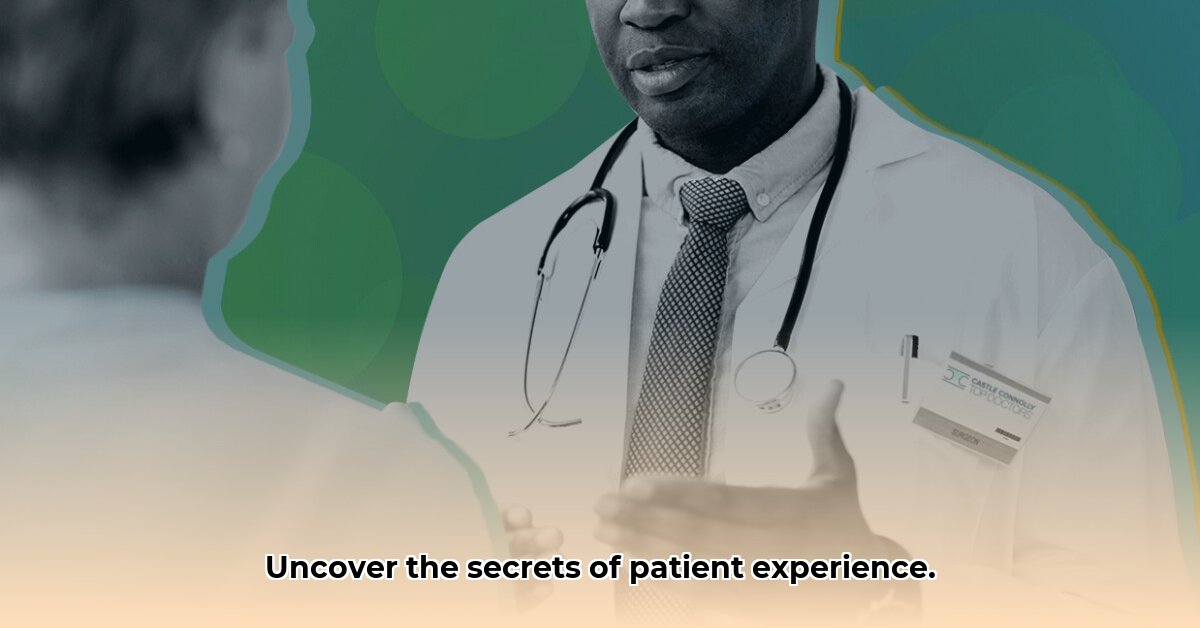
Understanding Patient Experiences in Dr. Tussing's Internal Medicine Practice
Dr. Gordon Tussing, a board-certified internist practicing in Buffalo, NY, maintains affiliations with Sisters of Charity and Buffalo General Medical Center. His practice accepts most major insurance plans. This case study analyzes patient experiences to explore the complex interplay between clinical competency and patient satisfaction within his practice. The analysis relies heavily on qualitative data from online reviews and lacks quantitative metrics, representing a limitation of this study.
Background: Dr. Tussing's Professional Profile
Dr. Tussing boasts over two decades of experience in internal medicine. His affiliations with prominent Buffalo hospitals suggest a strong foundation within the medical community. The broad acceptance of major insurance plans indicates accessibility for a wide patient demographic.
Case Presentation: Divergent Patient Perspectives
Online reviews paint a nuanced picture of patient experiences. A significant portion praises Dr. Tussing's medical expertise, thoroughness, and attentiveness. Positive comments frequently highlight his detailed explanations and genuine concern for patient well-being. For instance, one patient commented, "Dr. Tussing took the time to explain my diagnosis clearly, making me feel heard and understood." These reviews strongly suggest a high level of clinical competence.
However, a substantial number of reviews express significant dissatisfaction. Recurring negative themes include communication issues, perceived lack of empathy, and impersonal interactions. Several patients cite frustrating experiences with office procedures and prolonged wait times. A representative negative comment reads, "I felt like I was just another number, not a person with health concerns." This disparity in feedback warrants deeper exploration.
Analysis and Discussion: Bridging the Gap Between Competence and Experience
The divergence in patient perceptions reveals a potential gap between Dr. Tussing's demonstrable medical expertise and the quality of the overall patient experience. The absence of quantifiable data prevents precise statistical analysis but the qualitative feedback reveals crucial insights. The positive reviews consistently emphasize his medical knowledge and thoroughness. The negative reviews, conversely, point to shortcomings in communication and office management.
Several factors might contribute to these discrepancies. Dr. Tussing's communication style may be a significant factor. While his medical acumen is seemingly strong, his approach might lack the personalized and empathetic touch many patients desire. Efficient communication is crucial and includes active listening and ensuring patient comprehension. Additionally, office management inefficiencies, including extended wait times and administrative hurdles, could negatively impact the overall perception of the practice. This highlights a common challenge in healthcare: achieving balance between efficient operations and a patient-centered approach.
Actionable Recommendations: A Multifaceted Approach to Improvement
To improve patient experience, several actionable steps are recommended:
Implement Structured Feedback Mechanisms: Regular patient satisfaction surveys (e.g., brief post-appointment questionnaires) can provide valuable insights into areas for improvement. Efficacy Metric: A 90% survey completion rate will ensure sufficient feedback data.
Invest in Communication Skills Enhancement: Dr. Tussing and his staff should undergo training focused on active listening, empathy, and shared decision-making. Efficacy Metric: Post-training patient satisfaction scores should show a measurable increase (e.g., 15% improvement).
Streamline Office Processes: Analyze appointment scheduling and front-office procedures to identify and address bottlenecks. Reducing wait times and improving administrative efficiency is critical. Efficacy Metric: Target a 20% reduction in average wait times within six months.
Enhance Patient Education Materials: Develop easily accessible and understandable materials (both digital and print) to better inform patients about their conditions and treatment plans, fostering a more proactive and informed approach to care. Efficacy Metric: Measure patient comprehension through post-education quizzes, aiming for an 85% comprehension rate.
Foster a Collaborative Approach: Encourage open communication and collaboration with all staff members to address patient concerns promptly and efficiently. Efficacy Metric: Track resolution times for patient complaints, aiming for 95% resolution within 24-48 hours.
Conclusion: Prioritizing the Patient Journey
The case study of Dr. Gordon Tussing's practice underscores the importance of a holistic approach to patient care. While clinical excellence remains paramount, positive patient experiences are equally crucial for optimal healthcare outcomes. Improving patient satisfaction requires a dedicated, multifaceted strategy involving physicians, administrative staff, healthcare systems, and insurance providers. By focusing on effective communication, efficient processes, and proactive feedback mechanisms, Dr. Tussing and other healthcare providers can foster a more patient-centered and positive healthcare environment.